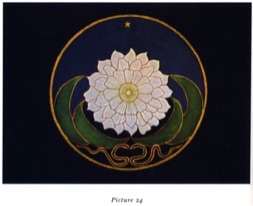
Carl Gustave Jung
It is difficult to give a brief overview of Carl Jung’s contribution to the field of psychology and mental health. His major contributions and primary theories are that we have a drive toward wholeness, and when wounded our psyches have an innate capability to heal and transform, given the opportunity.
Carl Jung grew up in Switzerland, and became a medical psychiatrist who trained and worked at the Burgholzi Mental Hospital in Zurich from 1900-1909. In his autobiography he says of that time that his main question was “what actually takes place in the mentally ill? “ (Memories, Dreams, Reflections, pg. 114).
Jung met with Freud in 1907 for a few years until Jung parted ways as he felt that Freud focused too much on sexuality as our primary psychological orientation. In Jung’s opinion we have multiple drives and needs, sexuality being an important one but not the only one. We also have a drive toward psychic wholeness (pg. 168) that includes a spiritual component.
Jung’s work is published in over 20 volumes and is the foundation for the work of Isabel Briggs-Meyers, and Katherine Briggs in the popular MBTI personality inventory.
Jung also had correspondence with Bill Wilson one of the co-founders of AA. Jung wrote to Wilson that, [the] craving for alcohol was the equivalent on a low level of the spiritual thirst of our being for wholeness, expressed in medieval language; the union for God.” Bill W. wrote to Jung saying that Jung’s comments about an alcoholic’s “Hopelessness” became “the first foundation stone upon which our society [AA] has since been built.”
Jung was also the first person to use the terms introvert and extrovert, now commonly used to describe personality types, and he was instrumental in encouraging creativity as a healing response to illustrating dreams, and emotional life. His work is a primary foundation for the psychotherapy that I practice.
Videos
Carl Jung and the Journey of Self-Discovery 1 of 2
Carl Jung and the Journey of Self-Discovery 2 of 2


The pictorial journey of a women client of Carl Jung’s; from her first to a later image. Of the first image he says, “The picture shows first of all her imprisoned state, but not yet the act of liberation… Our series of pictures illustrates the intial stages of the way of individuation [wholeness]". Mandala Symbolism, C. G. Jung, 1959 pgs. 8-64.
